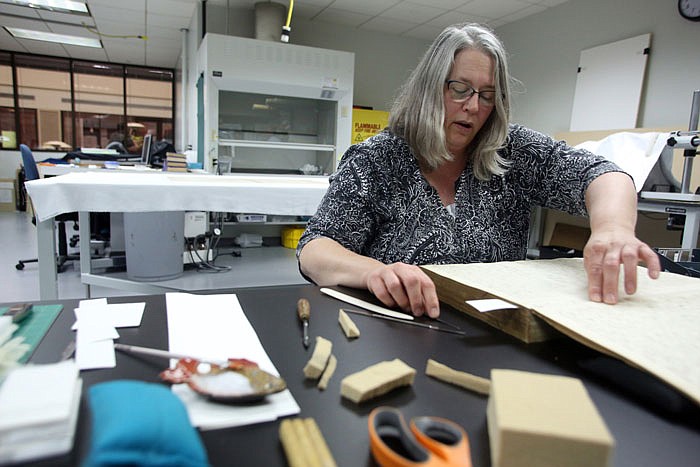The Missouri State Archives will host a virtual Facebook Live presentation on the archaeological finds of Arnold Research Cave near Portland.
Much like nearby Graham Cave, the Arnold Research Cave is a significant archaeological site for Native American artifacts. Here, researchers have found the world's oldest known open-toed sandal.
Since the 1950s, dozens of prehistoric shoes dating as far back as 9,000 years ago have been found in the cave including leather moccasins and sandals made of rattlesnake master, a type of native plant.
Items made of fibrous materials are rarely preserved because they decompose quickly - temperature and moisture changes cause materials to expand and contract, leading to the break down and destruction of fibers.
The Arnold Research Cave is one of the few dry caves in Missouri, with constant temperature and humidity levels. This is why the shoes have survived.
According to the University of Missouri Museum of Anthropology's website, right shoes, left shoes and shoes that fit either foot have all been found but not even one complete pair.
During the presentation, the museum's associate curator Candace Sall will discuss the artifacts, including 35 rattlesnake master sandals, ranging in age from 800-9,000 years old.
To watch the presentation, visit facebook.com/missouristatearchives/live/ at 7 p.m.
J.M. Shippee excavated the cave from 1955-58. His report of the excavations details his finds, including an infant burial. His report also explains how much of the site had been disturbed over the centuries with each new set of visitors and inhabitants.
At least two settlers used the cave - John Phillips, who extracted saltpetre between 1816-25, and an eccentric woodchopper known as the "Redman of the Woods" for his scarlet cap and coat. Similarly, the cave was explored by generations of picnickers and children, according to Shippee and a history of Callaway County published in 1884.
Shippee wrote there was evidence the infant burial, as well as other human remains found in the cave, had been disturbed and moved.
In his report, Shippee said there was still more to find in the cave and the "climax of exploration" was still to come. But, Shippee added later, 40,000 cubic feet of the cave deposits were bulldozed and destroyed in 1966.
"The hope of archaeologists that these miraculously preserved remains would be retained for study by scientists using all the bugeoning techniques which mankind has evolved is no more," Shippee wrote.
Shippee's report can be read at the Kingdom of Callaway Historical Society Research Center.

